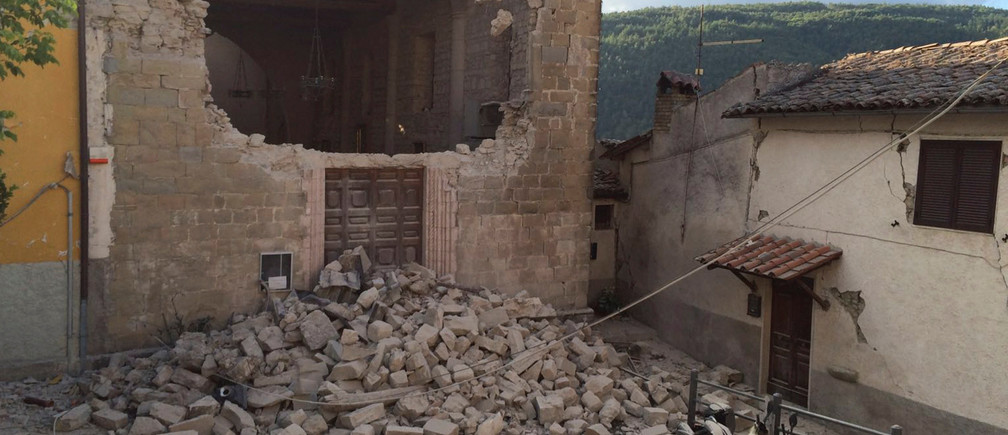Every year, earthquakes cause massive devastation and thousands of deaths, and yet we are still a long way from being able to predict when they will occur. August’s deadly quake in central Italy is another reminder of how suddenly and unexpectedly they can strike.
It’s not just predicting whether an earthquake will happen that is important, but where its epicentre will be, and how severe it is likely to be.
By their nature, earthquakes are a sudden phenomenon, so the science of predicting them is a complex one. For years, scientists have been working on devising methods for analysing earthquakes in the quest to minimize their damage.
Here are just a few of the techniques that geologists use to predict when and how disaster might strike.
Data mapping
Scientists constantly monitor tremors all over the globe to build up a picture of earthquakes. (The map below gives a snapshot of earthquakes recorded on May 16 2016 of a magnitude of 2.5 or over.)

This, combined with historical data and the area’s geological make-up, can give scientists an estimate of where an earthquake is most likely to occur.
Whilst this information is useful, the estimates are a long way off giving us a time span that is less than years or even decades.
Radon gas
Other methods are focusing on more up-to-the-minute predictions.
Radon gas is constantly emitted through cracks in the Earth. On certain occasions, spikes in the emission of radon gas have been observed as an immediate precursor to an earthquake.
Some scientists remain sceptical that the two are directly correlated, but enough correlation remains for this to be a continued source of study.
Georges Charpak, the Nobel Prize-winning physicist, spent the last years of his life developing a radon detector for this very reason.
Early tremors
In 2009, a 6.3-magnitude earthquake hit the town of L’Aquila in Italy. For some months previously, the area had experienced a series of small- and medium-sized tremors. Some scientists believed that this was a warning sign that a much bigger quake was to come. However, others disagreed, and the committee convened in the town to monitor the tremors reassured residents that no major earthquake was imminent. Having got their prediction badly wrong, the scientists were convicted of manslaughter for failing to predict the deadly earthquake (later quashed on appeal, however).
More recently, researchers in Japan have been monitoring tremors below the ocean using ocean-bottom seismometers, and think that these tremors may herald a clue as to when the next big earthquake in Japan may strike.
Around 90% of all natural earthquakes occur underwater, so being able to predict these would help avoid the devastation seen in the wake of the Boxing Day tsunami in 2004.
Can animals predict an earthquake?
Monitoring animal activity may well signal the possibility of an upcoming earthquake.
An unrelated toad survey taking place 70km from the earthquake that hit L’Aquila observed that five days before the earthquake struck almost all the toads suddenly disappeared.
“Our study is one of the first to document animal behaviour before, during and after an earthquake. Our findings suggest that toads are able to detect pre-seismic cues such as the release of gases and charged particles, and use these as a form of earthquake early warning system,” said lead author Dr Rachel Grant.
Precisely what it is that animals sense or fear is not known. Theories suggest that they feel the earth tremors before we do, or can feel significant changes in the atmosphere.
What can we do to save more lives?
The only way to minimize the effect of an earthquake is to construct buildings, bridges and infrastructure to withstand the onslaught of the biggest of shocks.
In addition, investment is being ploughed into early warning mechanisms likeShakeAlert.

Vibrations caused by an earthquake are measured as either P or S waves. P stands for Primary, because these are the ones that reach the seismometers first. By measuring the distance between these P waves, and the S waves that follow, scientists can build a picture of where the epicentre of the earthquake will be, thus giving residents valuable seconds and minutes to prepare.
Having time to leave a building before the quake arrives could save thousands of lives.





I will immediately grab your rss feed as I can not to find your email subscription hyperlink or newsletter service.
Do you have any? Kindly let me recognize so that I may subscribe.
Thanks. http://yahoo.co.uk
Hello there! This post could not be written much better!
Looking through this post reminds me of my previous roommate!
He always kept preaching about this. I’ll forward this post to him.
Fairly certain he will have a good read. Many thanks for sharing!
Great website, excellent post too! I truly love how it is simple on my eyes and the
data are well written.I’m wondering how I could be informed
anytime a new post has been created. I’ve subscribed to your RSS
which should do the trick! Have a good day!
Every weekend i used to pay a visit this website, as i want enjoyment, for the reason that this this website conations genuinely nice funny
data too.
Howdy! This article could not be written any better!
Reading through this post reminds me of my previous roommate!
He always kept preaching about this. I’ll send this post to him.
Pretty sure he will have a good read. I appreciate you for sharing!